#cotton linen fabric
Text
Discover the ultimate fabric showdown: linen vs. cotton. Uncover which fabric reigns supreme for summer comfort and style in this informative comparison.
#linen or cotton which is better#is linen or cotton better for summer#linen vs cotton shirts#linen for summer or winter#linen vs cotton shirt reddit#is linen good for summer bedding#cotton linen fabric#linen vs cotton pants#Which is cooler linen or cotton?#Is linen too hot for summer?#Is linen fabric hot or cold?
0 notes
Photo

Shop pure cotton fabrics online at Symplico for high-quality, affordable options. Elevate your wardrobe with our comfortable and durable collection. Shop Now!
#cotton fabric#cotton blend fabric#printed cotton fabric#cotton fabric online#cotton silk fabric#cotton linen fabric#Cotton Satin#cotton slub fabric#cotton fabric for kurti#floral print cotton fabric#plain cotton fabric
0 notes
Text
Fabric types and summer heat
The world is seeing record temperatures again. A lot of people find little comfort in their summer wardrobe these days, so it's important to be aware of how fabric types can influence your well-being in hot weather.
The following list of fabrics is by no means exhaustive, but it covers the basics.
Some of the fabrics mentioned below are expensive when bought new. You'll often find them for cheap in second-hand shops and on thrifting platforms though. I'm literally wearing a €5 linen underskirt, a €1 silk top, and a €7 silk summer dress right now, just to give an example.
General notes:
If you don't know where to start, try to stick to light-weight fabrics made of natural fibres. Look for light colours and open weaves.
You might be tempted to cover as little skin as possible in order to keep cool, but this leaves your skin vulnerable to sunburn. A thin layer of linen will often be more efficient at keeping you cool than leaving your skin bare.
Don't forget to wear sunscreen! Even if your skin type doesn't burn easily, it will still lower your chances of skin cancer. Look into sunscreens for children if you have sensory issues: they tend to be more sensory-friendly.

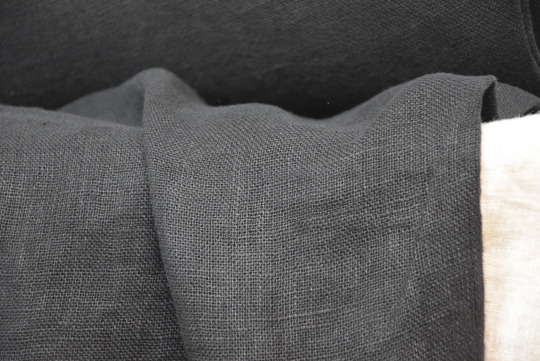
(Image source 1) [ID 1: a gray linen fabric with a tight weave.] / (Image source 2) [ID 2: a gray linen fabric with a loose weave.]
Polyester (to avoid):
Are your summer clothes making you ridiculously sweaty? Check the tag: you're probably wearing polyester.
Polyester is a synthetic fabric derived from petroleum: it's basically a plastic. It's strong, cheap, and stain resistant, which makes it a popular fabric. Even though a lot of summer clothes are made out of polyester, it's one of the worst fabrics to wear in summer.
Polyester is neither absorbent nor breathable, and captures heat. It traps sweat between your skin and your clothes, and it won't let you cool down. This leaves you feeling sticky and overheated. It can also cause static cling, which can be uncomfortable.
Not all synthetic fabrics are bad in summer: a lot of UV-blocking clothes are made of synthetics for example and can be a real life saver if you're sensitive to the sun. Try to avoid polyester if you can, though.
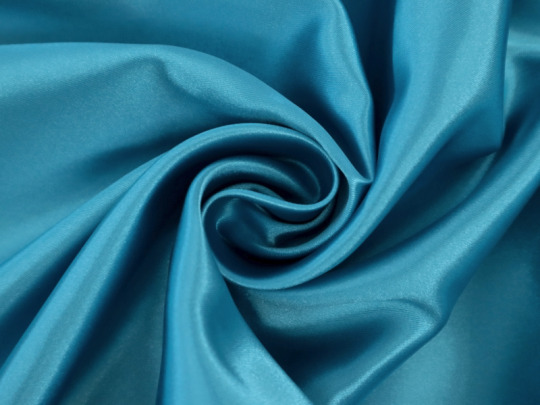
(Image source) [ID: close-up on a blue tightly woven polyester fabric that folds into a swirl at its centre.]
Cotton:
Cotton is a natural fibre that makes for a soft, durable, and breathable fabric. It allows air to circulate around your body which helps to keep you cool and get rid of sweat. It's a good basic choice.
Cotton has one downside: it's very absorbent, but takes a while to dry. If the weather's making you sweat excessively, the sweat can pool into the fabric of your cotton clothes. This will make them wet, resulting in visible sweat stains that can feel uncomfortable and will take a long time to dry.
If you can't stand how cotton feels, check out chambray weaves or bamboo textiles. They have similar properties to plain-weave cotton, but tend to be more sensory-friendly.
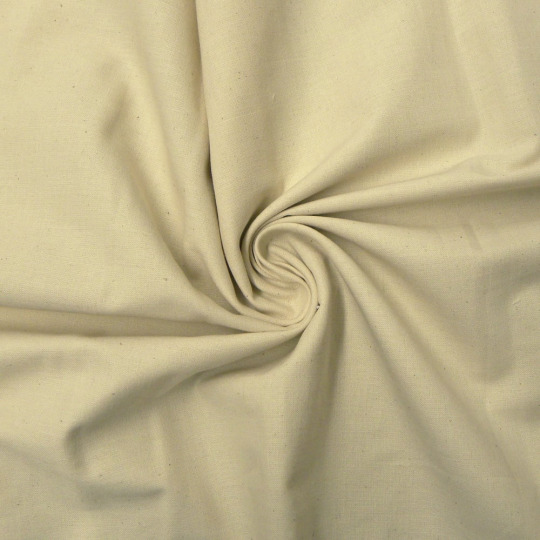
(Image source) [ID: close-up on a faded yellow tightly woven cotton fabric that folds into a swirl at its centre.]
Linen:
Linen is the absolute king of hot weather fabrics. It's strong, absorbent, dries quickly, and is very breathable. It cools you down, but won't make you feel sticky because any sweat it absorbs will evaporate fast.
I frequently layer multiple thin loose-fitting linen garments when it's hot. Loose layers allow for air to circulate between your clothes while protecting your skin from the sun. It almost functions as a wearable air-conditioner.
Note that linen is prone to wrinkling. If this bothers you, know that linen requires extra effort during laundry to avoid this.
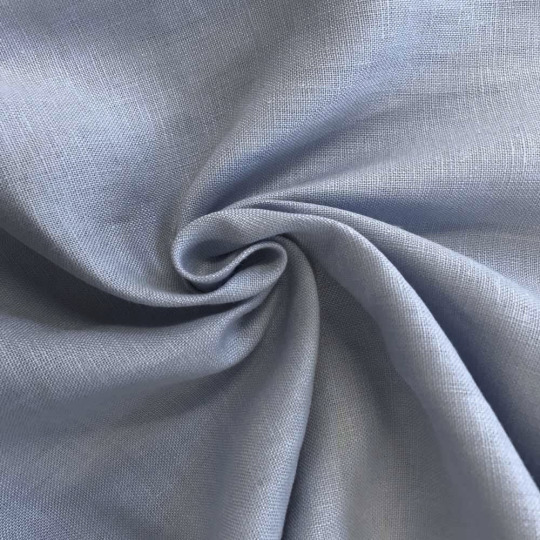
(Image source) [ID: close-up on a gray woven linen fabric that folds into a swirl at its centre.]
Silk:
Silk is yet another natural fibre that makes for a strong, quick-drying, and pretty breathable fabric. It's soft and cool to the touch, which makes it a great sensory choice.
Silk is not as breathable as cotton or linen, but dries very quickly. This means it might make you sweat more than cotton or linen does, but once the fabric's moist it will dry faster.
Note that sweat stains on silk tend to be pretty visible. Silk's also prone to static cling.
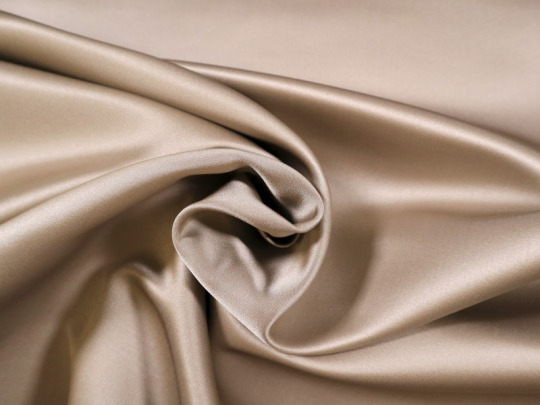
(Image source) [ID: close-up on a light brown tightly woven silk fabric that folds into a swirl at its centre.]
#wasteless crafts#fabric#summer#hot weather#sweat#fibres#silk#linen#polyester#cotton#chambray#bamboo#fabric types#fabric properties#clothes#fashion#keeping cool#heat waves#sunscreen#weather#thrifting#second hand shopping#fast fashion#slow fashion#sustainable fashion#uv blocking fabrics#tw cancer mention#tw skin cancer
2K notes
·
View notes
Text

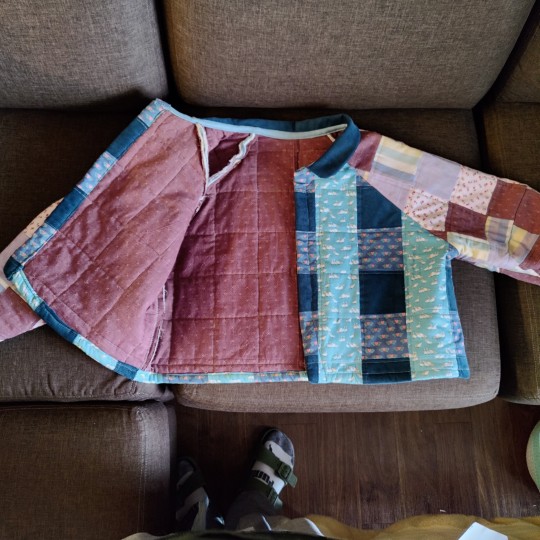

finished my patchwork jacket 😁😁
#this was such a perseverence project i've never quilted anything so sewing the patches and quilting and sewing the pattern... omg....#my goal is to be more sustainable with clothes shopping habits so now if i want something i have to make it vidkkskcjs#i want to remove as much polyester as possible so this is all cotton / linen / bamboo#i got some fabrics from a thrift store and the rest from my local sewing shop. very excited to sew more! i haven't sewn much in years!#salad dad#my art
16 notes
·
View notes
Text

Swatch sample 'Smallstem' of block-printed cottons and linens.
#block-print#block-printing#william morris#kate faulkner#john henry dearle#smallstem#ok here i go trying to identify chinoiserie floral motifs#peony#chinoiserie#bamboo#rose#spring blossom#spring blossoms#plum blossom#arts and crafts movement#fabric#cotton#linen
29 notes
·
View notes
Text
That post about using cotton thread for garment making drives me up the wall. Cotton thread fucking sucks. It’s not durable at all for every day clothing use. The only projects that you should be using cotton thread for 100% of the time is for things that are going to be exposed to high heat (ex. microwave cozies and pot holders) because it’s crucial that you use something that won’t melt. If you’re making clothes or costumes just use polyester. It’s fine. You’ll be fine.
#by all means go forth and make clothes using cotton and linen and wool for fabric!#just don’t be surprised when seams start popping because you were too good for polyester thread!#I think cotton thread also has uses in quilting but that’s an entirely separate set of skills I do not have
13 notes
·
View notes
Text
Do I need more clothes? No, probably not.
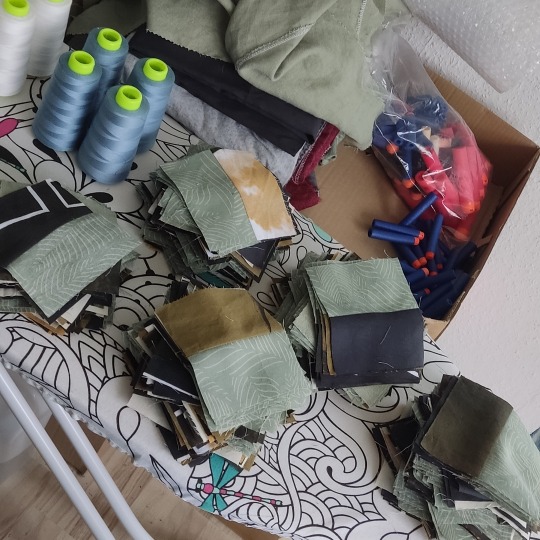
But I've got all these squares now. And I did math and adjusted my skirt pattern. And the bodice pieces are already cut out.

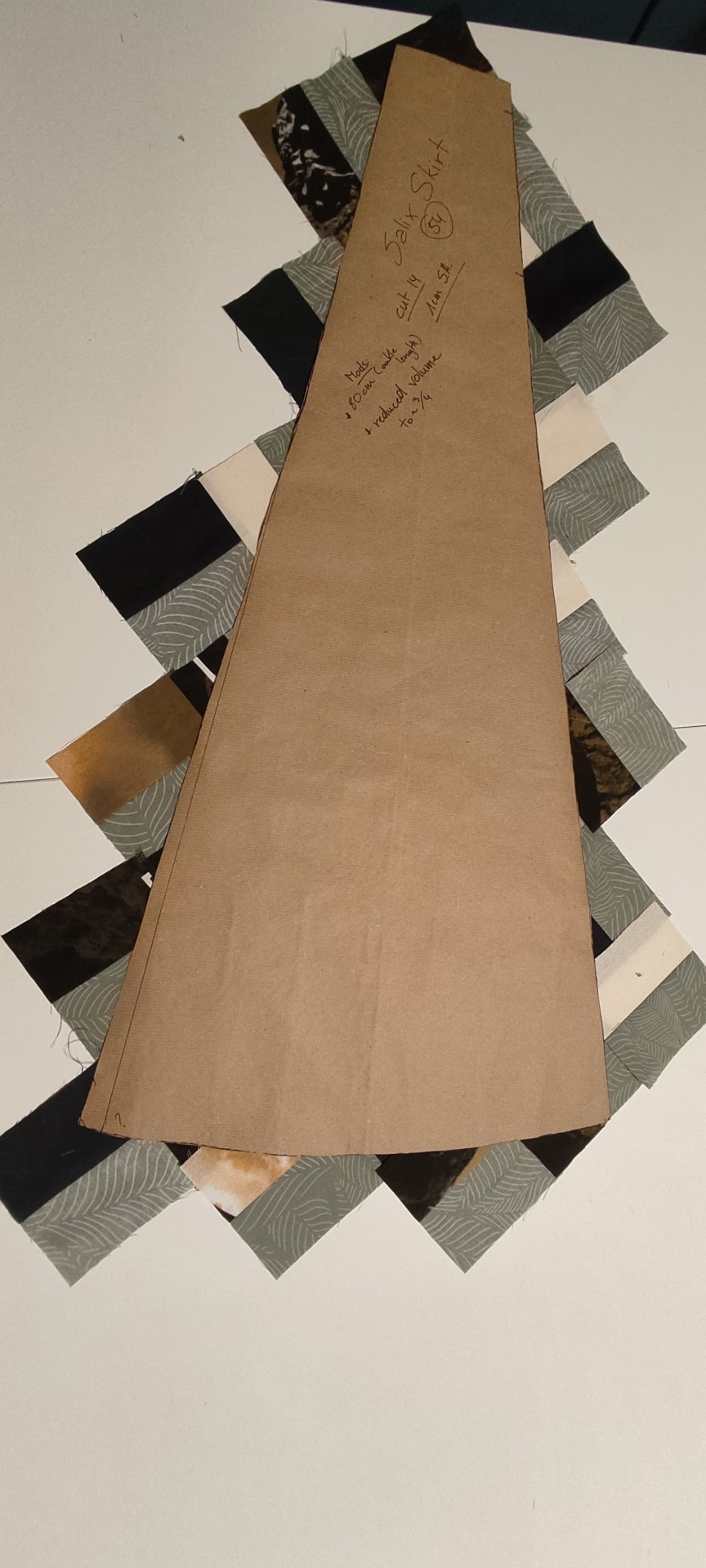
And, and... I would have to turn these into an actual quilt if I don't, and I'm pretty much out of materials to do that.
#sewing#patchwork#quilting? probably not#it's gonna beeeee#the Hinterland Dress by Sew Liberated for the bodice#with the back elastic hack and a 3/4 sleeve minus the cuff#Salix Skirt by Unendlich Schön#lengthened to 80 cm and reduced to 3/4#with that pocket mod I did on my last blue dress#patchwork/quilt pattern is Spiny Peaks by Modafabrics#fabric is a mix of leftovers from mostly bedsheets and a little bit of ikea linen and white calico cotton#yes another dress#sometimes adaptive clothing is wearing house dresses wherever#no ibs issues no sensory issues no trying to be office appropriate through morning brain fog#i technically maybe have enough backing fabric#but I don't have batting and no batting money#so flat lined skirt it shall be
6 notes
·
View notes
Text
“Discover: Types of Loom in Textile Manufacturing”
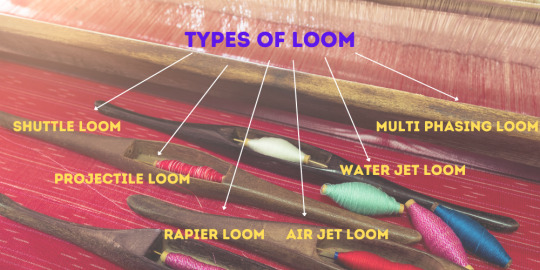
Loom? What are They? What Do They Manufacture?
Looms is the weaving machine which converts the yarn into a fabric. There is no history of when looms were discovered but one thing is clear that it was before the birth of Jesus christ. There are 2 types of looms: Shuttle Looms and Shuttleless Looms. Below we are going to learn about various types of looms. The end result of this machine is fabric and wholesalers and retailers buy t-shirts in bulk made out of those fabric.
Learn About Shuttle Looms
This is the most primitive loom in the history of loom. In this machine there is a shuttle which contains bobbins and around bobbins there are yarn wounded. In this weaving machine the shuttle travels from one corner to the other and hence the fabric is made. The speed of this machine is 110-225 ppm [Picks Per Minute]. It is quite noisy and inefficient.
Fabric Weaving Without a Shuttle in the Loom Is It Possible?
Projectile Loom
Projectile loom is a shuttleless loom, in this looms instead of a shuttle projectile are there. Projectiles are made out of stainless steel and hence it was light weight. As the projectile lightweight this saves lots of energy and increases the efficiency of the machine. This loom speed was 300 ppm. The weaving takes place when the projectile goes across the width of the loom with the yarn.
Rapier Loom
This loom is also shuttleless. In this loom the weft is carried by a rapier which is a long rod like structure. Many kinds of fabric could be made using this loom and it is highly efficient. The range of GSM things loom could weave is 20-850 GSM. From home fabric to industrial fabric can be made using this loom. There are 4 types of rapier loom in the market.
Single Rigid Rapier Loom
Double Rigid Rapier Loom
Double Flexible Rapier Loom
Telescopic Rapier Loom
Air-Jet Loom
In this loom the yarn is transferred from the force of air, it does not have any shuttle. This loom is highly efficient and versatile. This loom does not make noise because it does not have many moving parts. As the moving parts are less then the floor space requirement and maintenance is low. The weft travels with the help of air pressure and once it reaches the shedding area interlacement takes place. This machine can be used in manufacturing Denim fabric, polyester dress material and cotton shirting fabric.
Water Jet Loom
Water pressure is used in this loom to transfer weft from one end to the other. It is a shuttleless loom machine. The speed of this machine is 600 ppm. This machine is highly efficient but we can use yarn which is hydrophobic, like polyester, polyamides etc. Hydrophilic yarn can not be used.
#textile#manufacturing#textiles#yarn#clothing#dyeing#knitting#business#fiber art#pattern#fabric#fiber#cotton#linen#wool#tshirt#weaving#small business#entrepreneur#india#made in india#trade#wholesale t shirts#wholesalers
7 notes
·
View notes
Text
Have I ranted to you lot about the person who was looking for donations of "cotton" (fabric)?
I'm like sure, I have lots of cotton fabric. What kind are you looking for? I have jersey, I have quilting cotton, etc.
Turns out that she didn't actually know much about fabric (good for her for taking on sewing projects like this anyhow), and as far as I can tell meant quilting cotton specifically. To quote: "I'm honestly not sure what you mean about woven - cotton fabrics are woven, I thought..."
And like, I get it. It's hard to learn that sort of thing. I've read multiple guides on different fabric types and still can't recognise most of them. And the fact that I'm embarrassed that I can't recognise what counts as a shirting-weight fabric, or that a fabric is chambray should help me have compassion for someone who didn't have enough, frankly rather esoteric, knowledge of fabric types to know what they didn't know.
But cotton. Have you never read the tag on a t-shirt and seen what percentage cotton it is? Of all the fibre/weave/fabric type mix ups, cotton?
#For example#we had a Reach for the Top question about what linen was from#I buzzed in faster than my teammate#which was good#because he would have said cotton#because he legit didn't know what linen was#and was thinking of household linens#(he may have known about linen but not well enough to think of it)#and I don't complain about flannel vs flannette#especially since one of those you can buy in stores#and the other is a specialty fabric#and I'm sure there's stores that sell it#but I wouldn't know where#people thinking that silk means silk satin#that sort of thing#but cotton is an every day fibre!#how do you not know that?
8 notes
·
View notes
Text
poor 🌸 is so constantly bedeviled by the fact that we have identical wardrobes
#this morning i left the bathroom to discover that we were wearing the same pair of dark wash uniqlo jeans#and identical shades of light blue button down [theirs cotton/mine linen]#so i left to go change. into my other recently ironed clean button down which is a white striped version of the exact shirt they had on#fortunately we no longer own identical sneakers bc i busted mine a few years ago and switched to converse#i honestly don't really mind but it hurts them.#secretly i am thinking about how if i learn to sew i can select fabrics i would hate to make them shirts with#i won't do that because i do not anticipate getting good enough at sewing for collared shirts. but id kind of like to#box opener#unfortunately when you have a moderately depressed transmasc and a closeted butch transfem nonbinary person who go out shopping together#at the same two affordable-and-nearby stores. and are almost identical heights and builds with not dissimilar coloring#and the same job.#you get. uh. um. well you get this.
17 notes
·
View notes
Text
(deep sigh) I need to make plushies of my OCs. I need to make them so badly.
#Lea would be sooo hard to make though#I genuinely have no idea how I'd approach her hair#Unless I tried to make it out of wool or something...?#idk man I'd want it to have ~texture~ obviously#but dear GOD her hair would be a feat to pull off for me#definitely not a beginner's project lol#I think Lolo's out of the question as a beginner project too#again. hair.#I'd probably just go for Axciss since the most he has going on is just some subtle waves#or Finfe since she's also not really problematic#oh! or Shion!!#in my dreams I have the whole main cast#and so does Domi#either that or at the very least the whole cast is there and we just split them half-half#I might just cave and finally buy that damn fabric#I wanted to go with cotton or linen for the skin#but damn is it hard to find something that I can buy with cash that is in my city lol#they just don't seem to have what I need man!!#and I want to use minky for the hair#which is already polyester to begin with#so... sigh... maybe I could go with minky for the skin too...#just a different thickness#1.5mm should be fine right...?#either way I get the feeling I won't manage without using someone's credit card lol#@Domi I know what we're doing over the winter break I think#(not that my winter break will be all that long this semester. sigh.)#OH NO. UREIMETH PLUSHIES. OH NO.
3 notes
·
View notes
Text
I keep seeing ads claiming viscose is this uniquely cooling and breathable wonder-fabric and its making me a bit crazy like i know ads lie i know this and yet this feels like the worlds longest unfunniest prank
Like sure i guess that viscose-elastane pajama shirt would be cooler to sleep in than a fully synthetic material but thats not exactly the claim being made
And never any mention of the other qualities of the fabric like sometimes they mention weight but never what kind of weave/knit and so on
I think it bothers me more than other marketing bullshit because i actually do run very hot and also sensory issues so im hyper aware of the feel and breathability of fabrics
#viscose is very variable with feel though im not fond of it outside of like#specific blended fibres#i think feel is a very personal thing and you kind of have to just touch a lot of fabrics#but for breathability i dont think viscose is any better than cotton or linen#and it makes more sense to me to look at the weight and construction of the fabric#i do feel a good linen trumps all though like if i had the money i would live in linens#but some of that is due to other qualities like durability and also just texture preference
3 notes
·
View notes
Text
I feel like goths are going to ramble about the whole whimsigoth thing sooner or later so I'm gonna say it now: it's 10 times prettier than any trad goth outfit I've ever seen irl, no amount of festival kitch and punk rave can beat this shit
(Although I'd like a vampire spinoff, whimsivamp or something)
#Obv anyone can wear what they want <3#I'm just a big fabric elitist and sorry but most goths are made of polyester it's UGLY ok#and whimsigoth seems to have a lot of natural fabrics#be it cotton linen silk wool#whatever. Don't get vegan into this#there are plenty of natural vegan wool/leather substitutes#BUT YALL JUST REFUSE TO WEAR IT AND WEAR KILLSTAR PLASTIC#so good for the planet yea right
4 notes
·
View notes
Text
The first time we went to the fabric store, we were overwhelmed since we didn’t know what to look for. we would become overwhelmed by the endless rows of fabric shelves in the garment district of New York, and as beginner sewists, we could have used a guide to help me identify fabrics we could successfully sew with.
We have created a guide to buying fabric for beginners just starting out in sewing. We have included a list of 12 fabrics that are easy to sew, along with some online stores where you can buy them. From casual cotton to dressy silks, quite a few fabrics are suitable for beginners. To ensure that you can find a beginner fabric for just about any type of garment, we chose fabrics that cover both ends of the spectrum.
#fabrics#fashion#cotton#linen#textile#scarf#fabric#patchwork#linencotton#linenlove#sewing patterns#sewing inspiration#craft#sewing machine#sewing#sewing resources#diy#crafting#arts and crafts
28 notes
·
View notes
Text
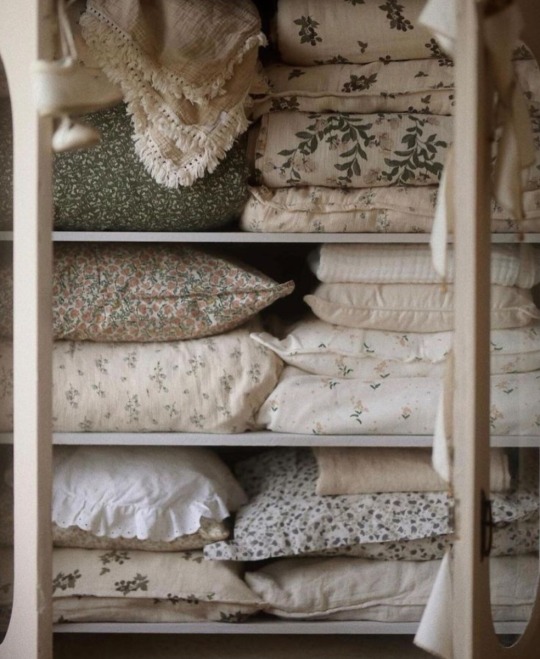
Spring fresh linens
4 notes
·
View notes
